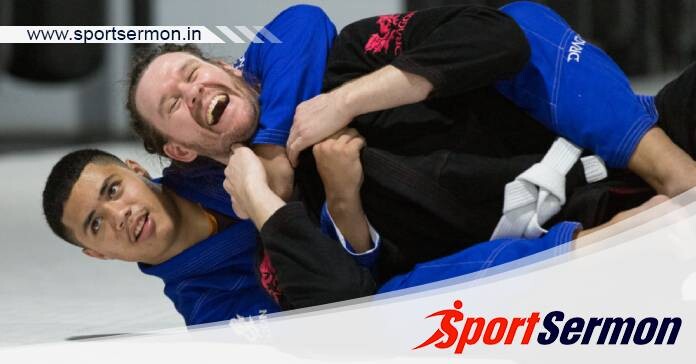BJJ Beginners: Brazilian jiu-jitsu has students from all walks of life and is one of the martial arts with the fastest global growth rates. It is a grappling method that prioritises positional superiority over anything else. Taking your opponent’s back in BJJ is one of the most powerful positions. This position reduces the likelihood of counterattacks while providing several submission possibilities. It’s essential for novices to comprehend the basic take-back tactics. This essay will go over three fundamental backtakes that any beginner should learn to use in BJJ.
The Value of Looking Behind
It’s crucial to comprehend the importance of the backtake in Brazilian Jiu-Jitsu before getting into the techniques. By taking the back, you put yourself in a position to dominate your opponent completely while also exposing them to different submission threats, particularly chokes. Furthermore, from the back, your adversary’s options are constrained, making it difficult for them to mount any successful counterattack. Given these benefits, novices should work to learn the backtake early in their BJJ career.
You might also be interested in reading this: What Is the Truck Position in BJJ?
Simple & Easy Backtakes For BJJ Beginners

Having established the significance of taking the back, let’s examine our top suggestions for BJJ beginners.
1) Wrap presents to return
The gift-wrapping stance is a potent one that you can use practically any place. This video features BJJ blackbelt Brian Glick and shows how to go from the first gift-wrap posture and take the back. It begins by first creating the gift wrap, which you may do from the side control position because the traditional defence of the opponent is arm blocking. Once you have the wrapping, you may utilise the arm arrangement to take the opponent’s back while reclined. This is a straightforward yet powerful approach to attack the back that doesn’t take any agility to execute.
2) Sit in a chair and back up
Black belt in Tenth Planet In the video above, Brandon Mccaghren explains how to sit in a chair. The chair sit-back involves a motion that is similar to leaning back in a chair, as the name suggests. It’s a move meant to get you from a less advantageous position—like the half-guard or the turtle—to a powerful one: the opponent’s back. The chair sits is an excellent general technique that may be used from the white to the black belt levels.
Setting up an underhook on the side from which you wish to sit back is the first step in performing the chair sit. This underhook is crucial to prevent the opponent from establishing a flattened, commanding stance. With the help of this underhook, you may simply sit back and bring the adversary over by redistributing your weight towards their free leg and shoulder. The movement should be simple and easy. If done correctly, you should be able to land on the opposing player’s back and get set to score.
The simplicity and efficacy of the chair sit-back-take are what give it its attractiveness. Although the move itself is not particularly technical, many BJJ players choose it because of how well it works when moving into dominating positions.
3) Backtake With Arm Drag
Black belts in BJJ The fundamentals of the arm drag in a two-on-one situation are discussed by Rob Biernacki and Stephan Kesting. The arm drag is a straightforward yet powerful technique in which you take possession of and drag your opponent’s arm across their body to open up an angle of attack. The purpose of the arm drag is to make your opponent reveal their side or back so that you can start your strikes from there. In terms of application, taking your opponent’s back might be one of the most advantageous positions in the sport. Additionally, it may be utilised to prepare sweeps from guard positions or to fend off an aggressive grip.
It is essential to maintain a tight grasp on your opponent’s wrist with one hand while controlling the elbow or tricep with the other. For more control, you can also cup close to the opponent’s armpit. Next, move at an angle while pulling their arm across their torso. This will quickly reveal their back or side.
Improving the backtake technique

While these methods serve as a foundation, regular practice and improvement are necessary to perfect the BJJ backtake. Drilling these techniques frequently is crucial, with an emphasis on the particulars of each action. Practise drilling on both sides while concentrating on the first entries that are displayed in the films. As you gain greater confidence in your technique, gradually add resistance. Live sparring sessions are priceless because they provide immediate feedback on how well your backtakes are working.
Additionally, constantly keep in mind the concepts of time and leverage. In BJJ, technique and leverage are more important than physical strength in order to dominate and submit your opponent. Each backtake has a best-case scenario for when to be used, and knowing when these scenarios arise with practice. Find these routes, and try to mimic them as much as you can in your training.
It’s usually a good idea to solicit feedback from your coach and training partners. To improve your comprehension and execution of these backtakes, they might provide insights, adjustments, and changes. Be receptive to their criticism since it will raise the bar for your technique.
Conclusion
Finally, it is advised that you research particular athletes who enjoy attacking the back. You’ll learn to value the strength of a back strike as you continue to study these masters. Never forget that no matter your size or strength, you can be an expert on your back. Garry Tonon, Marcelo Garcia, and Ryan Hall are just a few of the lower-weight class athletes who are among the greatest at taking the back today and in the past.
These are simple & easy backtakes for BJJ beginners. Let us know your thoughts in the comment section below.

